Question ID: 2000-7356-0-1-2-3
Recipe Description
Whole Foods had a previously frozen COHO salmon section, previously frozen is fine because then you don't have to worry about any parasites. My wife bought it, it was $24.00 for 2 lbs. Using a clean utility knife on the lowest setting score the skin so it reaches the flesh. This lets the cure penetrate the skin side.Use a pair of pliers to remove the bones. These bones can be removed before or after the process, I prefered to do it before. You can see them easily and feel them with your finger by running it along the fish on the highest part of the fillet. There will be a lot of bones, and you might miss a few. Don't panic. Do your best.The Thing About Fresh vs Frozen FishMost "fresh" salmon sold in your store was frozen on the boat after it was caught, but the store doesn't tell you this. Ask your fishmonger if it was previously frozen. Freezing kills any bacteria and parasites in the fish before making your lox. If you can't confirm your salmon was previously frozen I would advise a 4-6 hour freeze when you are done making the lox, then thaw before serving. Of course, people have been eating this preparation for hundreds and hundreds of years with few side effects, I am just mentioning this since it is a cured, smoked, but uncooked product.
A dry brine is prepared of these ingredients:100g salt 60g dark brown sugar1 tsp black peppercorns5-10 juniper berries I used a coffee grinder on the pepper and juniper berries after I heated them in a pan to release their essential oils. Mix all the dry ingredients and spices together thoroughly. Get a sealable reusable plastic food container and line the inside with plastic wrap with lots of overhang. Pour about 1/3 the cure on the bottom of your dish. Place the fish skin side down into the container.Take the the remaining 2/3rd of cure, work it in slowly and gently on top of the fish, lightly rub it on then pack it over the entire fish.Wrap with overlapping plastic wrap and poke a lot of holes with a sharp paring knife in the plastic on the skin side to allow the liquid to drain off. Cover with the lid, and place into the fridge for 8-12 hours.As for the nebulous 8-12 hour time estimate allow me to explain. Guides for this step online vary greatly in time estimates, some claim "8 hours maximum or you'll ruin the fish". Others say 12hrs. Still more say longer times. I settled on a merging of two recipes that were similar in every way other than the times. In any case where there were conflicting or disparate claims on times, I took the average. In this case, the fish was in the dry stage for 10 hours. Yes I know the note says 8, I changed my mind. This is my Lox party.
The second stage is a wet brine, where the fish is submerged in a salt and sugar solution to further cure the fish and remove water from the flesh before cold smoking. This is a very important step.I had a recipe for a brine that called for 50lbs of salmon from one place. Another recipes was for 5 gallons, so I reduced the quantities down for 1 quart of water. Most recipes assume for larger quantities of fish because it's so time intensive to make lox. Your fish will sit in this brine for 8-12 hours.Wet Brine:1 Quart water 0.7 cups of salt 0.35 cups dark brown sugar 1/4 tsp. peppercorns 4-5 juniper berriesThe spices were lightly toasted in a frying pan then crushed before adding. The brine should be left for 4 hours minimum in your refrigerator before using, this will allow the spices to meld. I made this brine in advance and let it sit overnight while the fish was in the dry brine stage.The salmon is removed from the plastic lined container, there will be a lot of liquid in there to discard. Gently rinse the salmon off under lightly flowing cold water. Wash out your plastic container and place the rinsed fish into it. Pour the brine over the fish so it is completely covered and put the lid back on. Label the time and date.I leave notes on all my projects because even I forget what the heck is in my fridge from week to week. I also set alarms on my phone's calendar to go off to remind me. If you have 4 or 5 ore more things working at once you need to get into the practice of labelling everything you make. It's a good practice, and doing things like this incorrectly can make people very ill. Good notes let you repeat the process over and over. Keep a small notebook with quantities, ingredients, cook times, etc. and you will get better and better at this in time.
While many recipes for making lox couldn't agree on much, they all agreed you needed to let the cured salmon to sit in a sink under cool running water for 30m. So after dumping out the brine, that's just what I did. Let it run under cold water on a moderately low setting and just let that go for 30 minutes.
The best way to get the fish to dry before cold smoking is to use a teflon lined cookie cooling sheet over a sheet pan with paper towels on it. You don't need the paper towels, but it makes cleanup a lot faster. Remove the fish from the water and pat it dry on the drying sheet. You can also use a clean grill grate in place of the teflon lined cookie cooking sheet. It works just as well. Put the Salmon into the fridge for a few hours, I let it dry for about 6 hours. According to other recipes they called for drying your fish for as little as 1 hour, and as long as up to 24 hours.After 6 hours remove from the refrigerator, 30m before this you should prep your smoker as shown in the next step.
There are a lot of schools of thought on cold smoking. Sawdust or pellets are the preferred method. I use pellets because I tried them a year ago and they work the best for me. You can use any method you want with any wood, wood sawdust, charcoal, pellet or blend you like. No hate, just LOVE for my BBQ and charcuterie pals.Wood Pellets DemystifiedThey are compressed sawdust. They give a great wood flavor to anything you eat. Mystery Over. Wood pellets for smoking foods can be gotten in many wood varieties and are relatively cheap and last a long time.There are two brands shown here in my photos, the front is Trager - they are just OK to me and are made of 30% applewood, 70% oak (oak is considered a filler wood, not a flavor wood) but they are decent on cheese. The other bag shown are made by CookinPellets and are an all hardwood blend of maple, hickory, apple and cherry. I went with those, and recommend them, they are a remarkable bargain.Smoking TraysI am using a sawdust (and wood pellet) smoking tray from Amazenproducts. This little tray is what I use for all my cold smoking projects, sausages, cheese, or to add more smoke to BBQ projects.The easiest way to light the wood pellets is with a simple hardware store propane torch. I set the tray on a brick before lighting. It takes a good minute or two to get them to light. I load both sides of the tray, but only light one side. When the left side burns out in 6 hours I can remove it, light the other side, and quickly get it back inside my smoker. I will get 12 hours of smoke from this set up.My SmokerDon't let the heavenly rays fool you, it's just an older 30" Masterbuilt Electric Smoker. To cold smoke we use it like a refrigerator. The smoker is not plugged in or turned on at all during the cold smoke process.I put ice into 1-2 sealed ziplocks and use 2-3 frozen bottles of water to use in the smoker to keep it cold. I want the chamber cold, but not too humid. If I just put ice loose into my drip pan the chamber would be very high in humidity. We want it cold and dry. The idea is to not let the smoker get above 70F (21C) in the chamber - this is a great temperature for cold smoking fish and cheese.I used two temperature probes, one in the metal rack under the fish, one outside the smoker poking into the smoke outlet. I took the average of the two to determine temperature inside the chamber. They ran within 2 degrees of each other most of the smoking process.I let the fish smoke for 15 hours over cold smoke. The temperature of the smoker averaged 64F (18C) the whole time, with a low of 59F (15C) and a high of 68F (20C). I had an alarm set on my temperature remote to go off it the temperature went above 72F. If you don't own a wireless remote temperature probe, you should try one out once you seriously get into this hobby, they are essential for long smoking projects.I don't have a cold smoker tray, can I make one?You can make a simple smoking pellet tray from a disposable steel pie pan (no non stick ones please). Poke holes with a small nail in the shape of a letter C on the pie pan - make the holes fill a 1" (2.5cm) wide band. Place a 1x1" (2.5cm x 2.5cm) line of wood pellets over the holes and light one end, it will burn like a snake. Make a small coil of aluminum foil into an S shape. Place S shaped foil in your smoking box, and put the pie pan on top, this gives good airflow.I don't have a cool smoker setup like you, can I make one?YES! A aluminum lined cardboard box with a piece of unglazed quarry tile on the bottom will work well. Just make a hole on top for your smoke to escape, and a small air inlet on the bottom to let air in. Use your pie pan as described above to burn the pellets. I will make an instructable in the future showing how to make both of these.
I let the fish sit in the fridge for an hour before slicing, tasting and vacuum sealing. Fish cured, smoked, and sealed in this manner will keep up to 3 years in your deep freezer. It won't ever last longer than 3 months though because you will eat it all once you sample a piece. The flesh is firm, the color is a deep orange, and the taste was spot on. And the best part? It looks and tastes just like the real thing for 1/4 the price. It is a time consuming process to make, but well worth it. After I did this, I understand why people do this 50lbs at a time, it takes almost 3 days from start to finish!Maybe the best lox ever? Y E S !
Question & Answer
Question: Choose the best image for the missing blank to correctly complete the recipe.
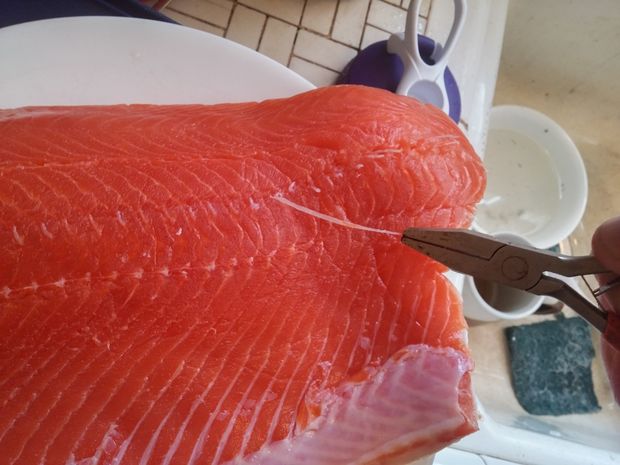
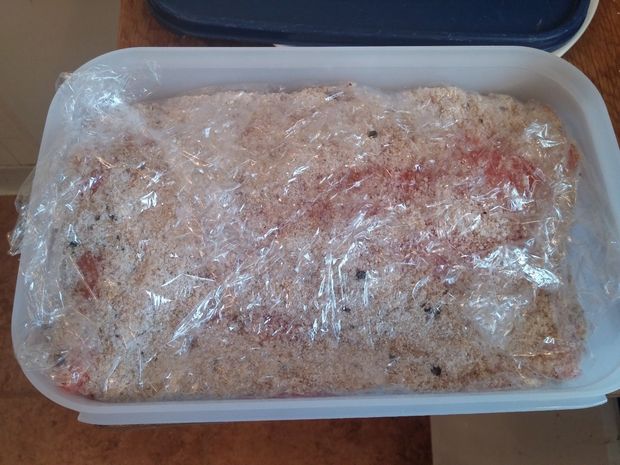

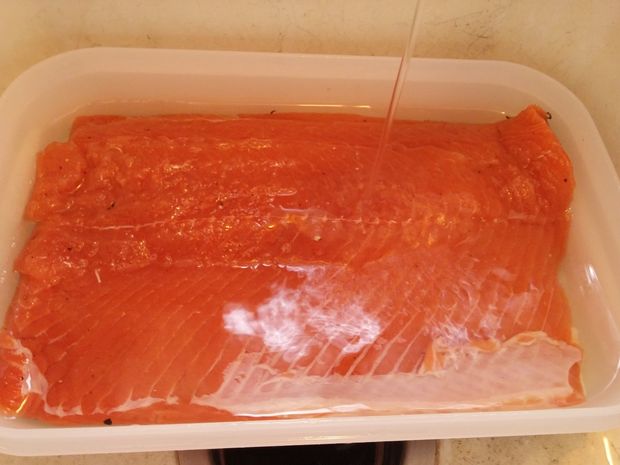
Choices:
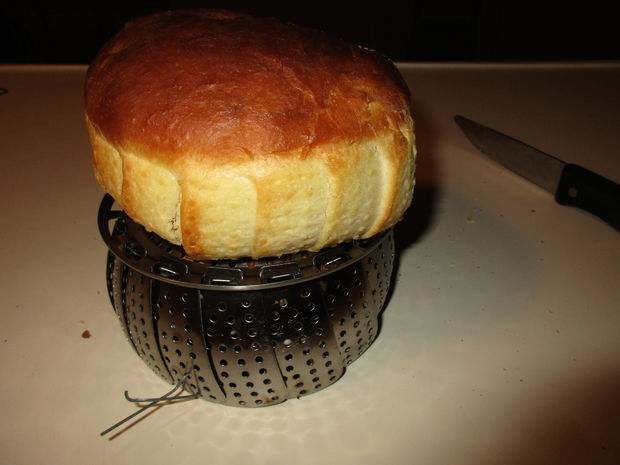 |
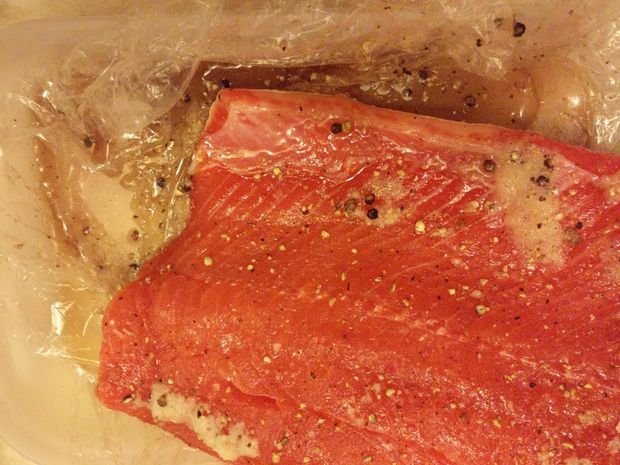 |
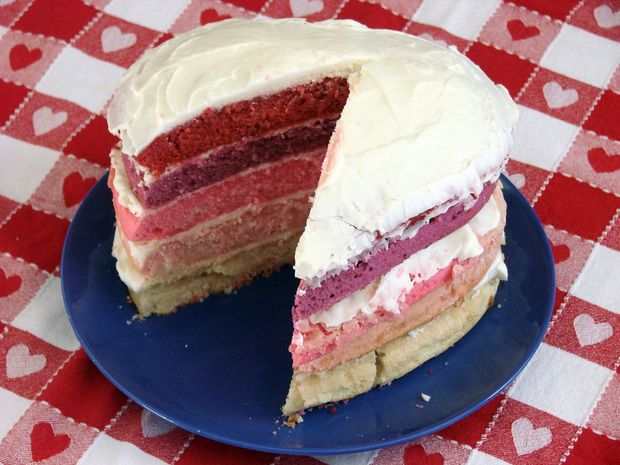 |
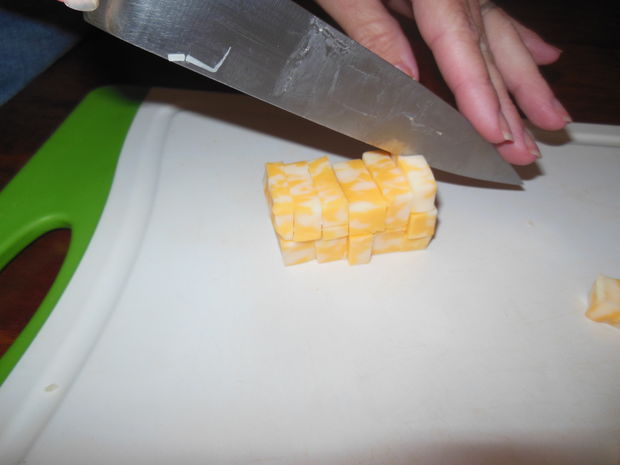 |
|---|---|---|---|
| (A) | (B) | (C) | (D) |
 |
|---|
 |